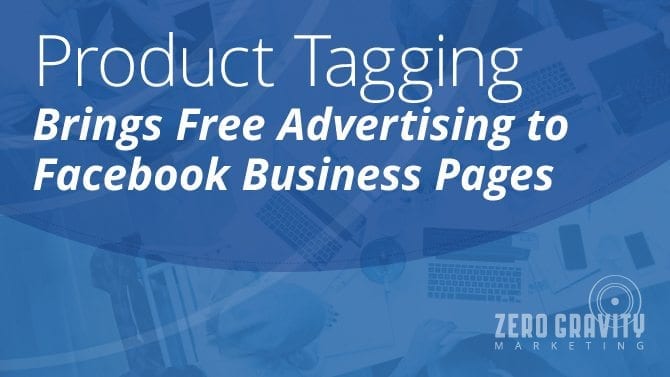
If you are an ecommerce business who is active on Facebook, there is some good news headed your way (if you don’t have access to it already). For the past few months,
Facebook has been testing a new way for businesses to tag products right from their posts, and it could mean more sales for your company.
How Does Product Tagging Work?
As Business Insider has reported, product tagging on Facebook has been slowly rolling out to business pages across the social network. When posting a status update, photo, or video, Facebook will give the option of tagging products. It works similarly to tagging your friends on your personal page, but if the user clicks on the tag, it will open a separate page just for that product. You can customize this page with information about the product along with an image, pricing information, and more.
Who Can Use Product Tagging on Facebook?
While the tagged products feature is still rolling out, as of right now, most companies who have a product catalog or shop section on their Facebook business page should be able to tag their products. If you have an existing product catalog and are not able to use product tagging, all that is required is a little patience. The feature should be accessible to you soon.
Why Use Tagged Products?
In short, product tagging on Facebook is a free way to get your goods in front of more buyers. Many experts also speculate that Facebook will use this new feature to allow even more targeted ads. For example, if you have pair of red shoes tagged in a post, it could help Facebook show it to users who are searching for red shoes.
How to Tag Your Products
According to Facebook, if your business page has a product catalog, you can tag up to 30 products within your posts. To do this you simply click the “Tag Products” icon within the update box. The icon looks like a shopping bag with a price tag on it. Once you click on the icon, you click on the image of the product you want to tag and then start typing in the name of the product. Once you see the correct item show up in the drop-down list, click on it. Then, click “Done Tagging” and you are finished.
As incredible as product tagging can be to increase your organic visibility, Facebook points out that these posts are not meant to be boosted. Instead, they recommend using Dynamic Ads to promote your products across the Facebook platform. To learn more about the new product tagging feature on Facebook, or to get your social media campaign started today, contact Zero Gravity Marketing.






